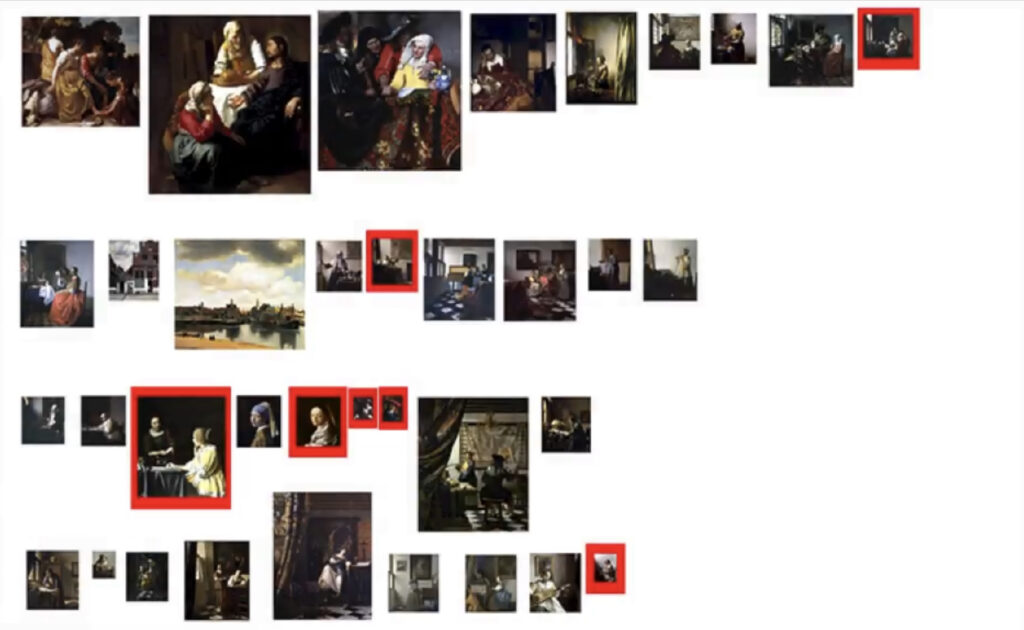[And DC]. I just drove so far I ran out of content, so I relistened to the David Zwirner podcast about Benjamin Binstock’s reattribution of several Johannes Vermeer paintings to his daughter Maria Vermeer. In the interim, I’ve also watched Binstock’s address of Lawrence Weschler’s 2013 symposium at the NY IFA to address the authorship theory. Which, also, it rests in large part on creating a chronology of Vermeer’s extant works, something that traditional Vermeer scholars have generally eschewed in favor of more arguable date ranges.

Here, meanwhile, is a timeline Binstock presented in 2013 of Vermeer’s production, to scale, with seven what he calls widely recognized “misfits” outlined in red.
In case you don’t recognize them immediately, they are, from top to bottom, with their Rijksmuseum dates:
Girl Interrupted at Her Music, c. 1659-61, at the Frick
Young Woman with a Lute, c. 1662-64, at the Met
Mistress and Maid, c. 1665-67, at the Frick
Study of a Young Woman, c. 1664-65, at the Met
Girl with a Flute, c. 1665-66, at the National Gallery (DC)
Girl with the Red Hat, c. 1665-67, at the National Gallery (DC)
Woman Seated at the Virginal, c. 1670-72, Daphne & Thomas Kaplan’s Leiden Collection
It does seem wild that all the Maria Vermeer Theory paintings are in the US. The Kaplans’ Vermeer, long unknown to scholars and not really even seen until the 21st century, was bought by Steve Wynn at Sotheby’s in 2004, and its Vermeer attribution was only firmed up in the last 15 or so years. So very much in play, just as Maria’s name appeared in the discourse—and was ignored or dismissed.
Previously, related: Girl With A Reattribution
